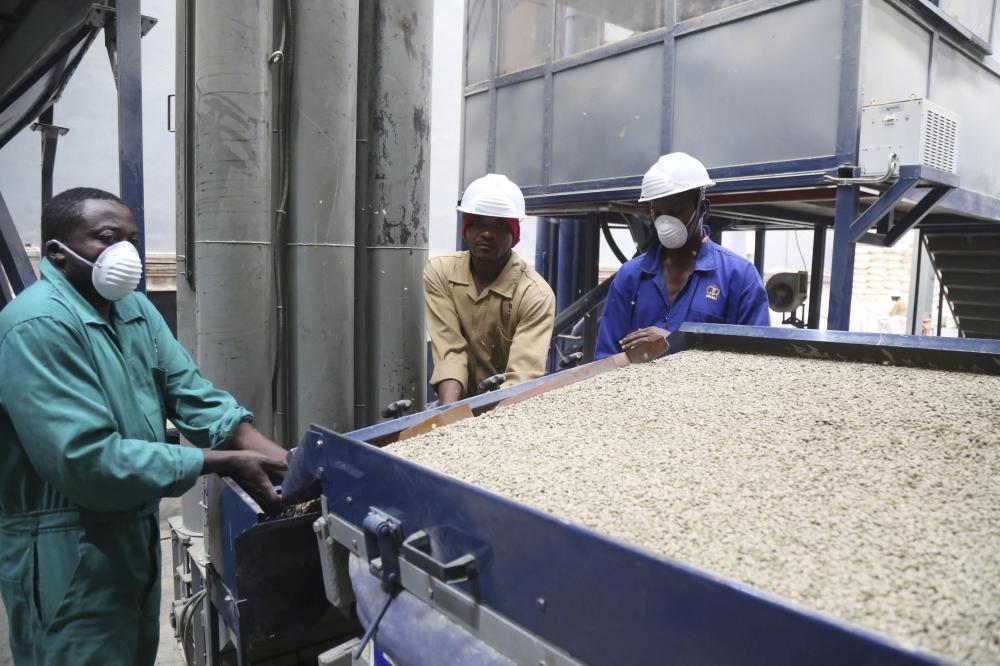Africa-Press – Rwanda. When coffee prices shift on commodity markets in New York, the ripple effects reach as far as farmers in Nyamasheke, the largest coffee-producing district in Rwanda. A fluctuation in the U.S. can alter a Rwandan exporter’s earnings and, ultimately, what a local farmer takes home.
For instance, on January 15, the National Agricultural Export Development Board (NAEB) set the farm-gate price for high-quality coffee cherries at Rwf600 per kilogramme. This was a 25 per cent increase from the 2024 rate of Rwf480/kg. The price still in effect is the minimum that buyers must pay farmers.
NAEB bases this rate on several elements: production, processing and transport costs; international coffee prices on the New York commodity market; and the exchange rate between the U.S. dollar and the Rwandan franc.
Why Brazil, Vietnam’s supplies are a major factor for coffee pricing
According to Oreste Baragahorana, Chairperson of the Coffee Exporters and Processors Association of Rwanda (CEPAR), global coffee prices are largely dictated by supply and demand.
Workers sort coffee beans under process for export at Kigali Special Economic Zone. Photo by Sam Ngendahimana
“These countries dominate the coffee market. When they restrict supply, prices go up. When they increase supply, prices fall,” he told The New Times.
He pointed to climate change as a major disruptor, noting that reduced harvests in Brazil (Arabica) and Vietnam (Robusta) quickly push global prices higher. At present, some Brazilian farmers are reportedly holding back supplies, asking for as much as $6–$7 per kilogramme, which indirectly benefits smaller producers like Rwanda.
In developed markets, rising living costs also push sellers to demand higher prices to keep pace with inflation, Baragahorana added.
Loic Rwagasana, Managing Director of the Coffee Business Centre, stressed that pricing remains seasonal and largely dependent on supply and demand. “Brazil has a huge influence. When it limits supply, prices go up. That’s a simple reality,” he said.
The U.S. Department of Agriculture (USDA) projects global coffee production in the 2024/25 season to decline by 500,000 bags to 174.4 million, with exports revised downward by 800,000 bags to 121.5 million. Each bag contains 60 kilogrammes.
The drop is attributed to droughts in Brazil and Vietnam, which together account for over half of global production.
Looking ahead, however, USDA forecasts production to rebound in 2025/26, reaching a record 178.7 million bags, supported by recoveries in Vietnam and Indonesia and a bumper crop in Ethiopia. Exports are also expected to rise slightly to 122.3 million bags.
The U.S. dollar factor
Coffee beans are among the world’s most traded agricultural commodities, and futures contracts on exchanges such as the New York Intercontinental Exchange play a central role in determining prices. These contracts are denominated in U.S. dollars, making the greenback’s strength another key factor in coffee trade.
When the dollar strengthens, coffee becomes more expensive in other currencies, which can reduce demand and lower prices. Conversely, a weaker dollar makes coffee cheaper globally, often driving demand and boosting prices.
“Most of the time, prices are impacted by two things: Brazil’s supply and the strength of the U.S. dollar,” Rwagasana said. He noted that a weaker dollar against the Euro improves European buyers’ purchasing power, making coffee more affordable in that market.
Impact on Rwanda’s coffee revenues
Baragahorana said current international market dynamics are favourable for producers. “We expect increased revenues this year, both due to rising unit prices and higher volumes of exportable coffee—thanks to favorable weather,” he observed.
He projected that average prices could reach $6.5 per kilogramme in 2025, compared to $4.78/kg in 2023/24, according to NAEB data.
Rwanda’s coffee revenues fell by 32.1 per cent in 2023/24 to $78.7 million, down from $115.9 million the previous year. The decline was attributed to both lower volumes—16,400 tonnes, a 17.9 per cent drop—and weaker global prices. The average international coffee price had fallen from $5.78/kg in 2022/23 to $4.78/kg in 2023/24.
The government aims to increase annual coffee export revenues by 46.8 per cent to $115.5 million by 2029. Strategies include replacing aging trees, expanding cultivation, and boosting value addition—particularly through roasted coffee exports, which currently account for less than 1 per cent of Rwanda’s total.
These initiatives fall under the fifth Strategic Plan for Agriculture Transformation (PSTA 5), covering 2024/25 to 2028/29.
For More News And Analysis About Rwanda Follow Africa-Press






